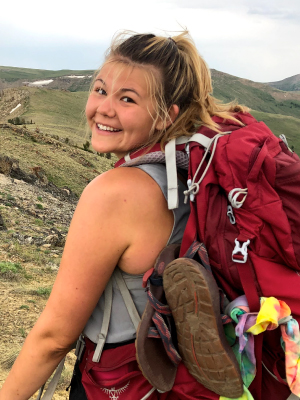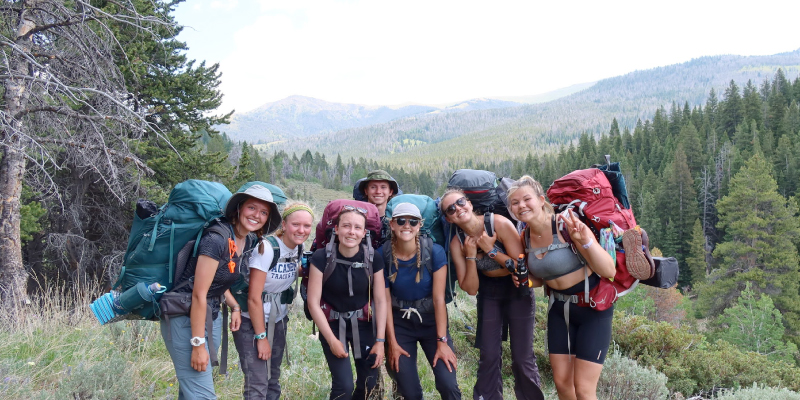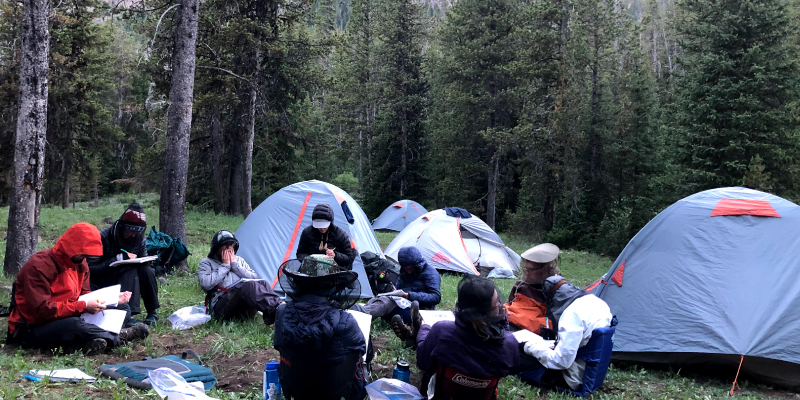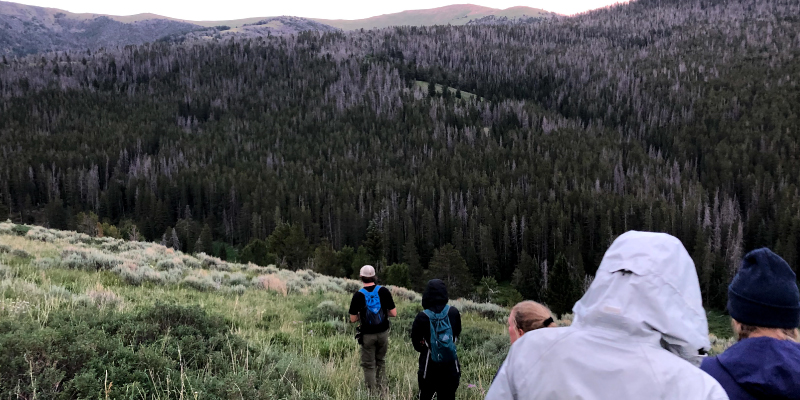
Over the summer of 2021, undergraduate student Alyse Bartol completed a three-week field course with the Wild Rockies Field Institute, a program where students learn about complex social and environmental issues while roughing it outdoors. “It was the hardest thing I’ve ever done, but it was also the most rewarding,” said Bartol.
While hiking through the Greater Yellowstone Ecosystem of Montana and earning three credits in Natural Resource Management, Bartol recorded her journey and created a video documenting the experience. The video, available on YouTube, highlights the views of the area surrounding Yellowstone National Park, interactions with nature, and the projects the group of ten students and two instructors took on.
Bartol said the field course was unlike anything she had ever experienced before. “It was the coolest thing ever,” said Bartol. “We had lessons out in the mountains where we would sit down and learn for an hour. We only had what we could carry in our backpacks and cooked all our own food on camp stoves.”

Her decision to undertake such a challenge stems from her passion for the environment and documenting nature. For her undergraduate degrees, Bartol has combined the environmental studies major with the radio, television, and film track within the communication arts major.
Once she graduates, Bartol hopes to create videos addressing today’s most pressing environmental challenges. “I think the biggest difference that I can make in the world is telling stories about how climate change is affecting people,” said Bartol. “And I think videos are the best way to do that.”

Bartol said her favorite classes are those that combine her interests of the environment and film. Recently, she took History 125, Green Screen: Environmental Perspectives Through Film where students learned how attitudes toward the environment at different points in time were reflected through a variety of film types.
Another class Bartol enjoyed was Communication Arts (Comm Arts) 310, Topics in Rhetoric and Communication Science. “That was one of the most thought-provoking classes I’ve ever taken,” said Bartol. “We talked about how different environmental communication tactics worked.” Bartol said the lessons she learned in Comm Arts 310 will help guide her with what message and tone will be most effective in the videos she hopes to create in the future.
Outside of her classes, Bartol is a member of the Sierra Student Coalition and the a cappella group Under A-Rest at the University of Wisconsin-Madison. She is also a Nelson Institute ambassador where she helps guide potential environmental studies students, plan Nelson Institute sponsored events, and write thank you letters to donors.
Bartol encourages those in the environmental studies program or who have an interest in the environment to consider signing up for the Wild Rockies field course. “Wild Rockies completely expanded my understanding on what it really means to be an environmental studies major by showing me, in person, exactly the things I am studying out in the field and why they are so important,” said Bartol. “It’s one thing to read about, say, invasive species in a textbook, but a completely different thing to hike to the top of a mountain and look out to see mile wide areas of forest that have turned white from the mountain pine beetle. It’s just a completely immersive experience.”

Learn more about the environmental studies major and how you can support the program.